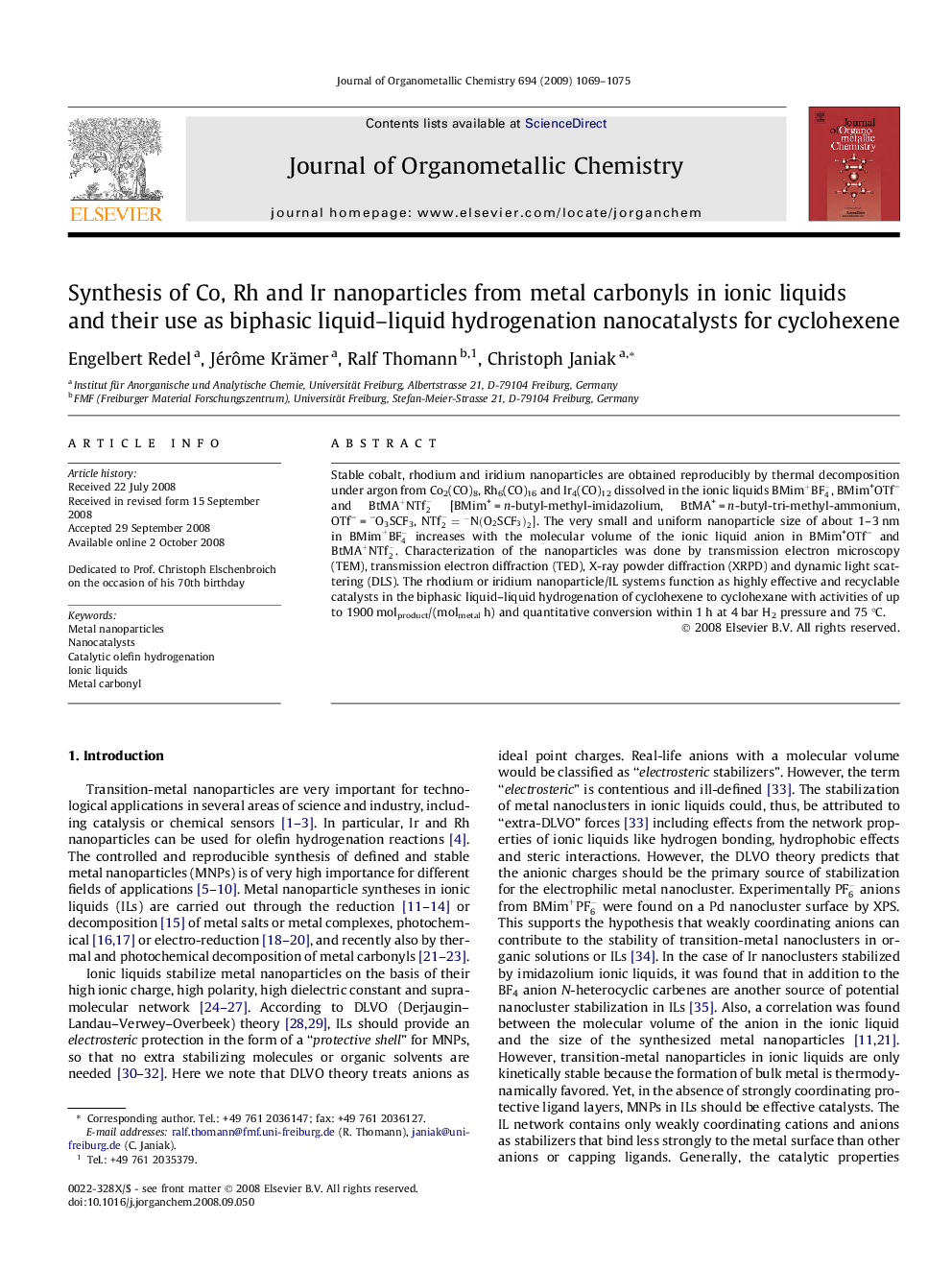| Article ID | Journal | Published Year | Pages | File Type |
|---|---|---|---|---|
| 1324655 | Journal of Organometallic Chemistry | 2009 | 7 Pages |
Stable cobalt, rhodium and iridium nanoparticles are obtained reproducibly by thermal decomposition under argon from Co2(CO)8, Rh6(CO)16 and Ir4(CO)12 dissolved in the ionic liquids BMim+BF4-, BMim+OTf− and BtMA+NTf2- [BMim+ = n-butyl-methyl-imidazolium, BtMA+ = n-butyl-tri-methyl-ammonium, OTf− = −O3SCF3, NTf2-=-N(O2SCF3)2]. The very small and uniform nanoparticle size of about 1–3 nm in BMim+BF4- increases with the molecular volume of the ionic liquid anion in BMim+OTf− and BtMA+NTf2-. Characterization of the nanoparticles was done by transmission electron microscopy (TEM), transmission electron diffraction (TED), X-ray powder diffraction (XRPD) and dynamic light scattering (DLS). The rhodium or iridium nanoparticle/IL systems function as highly effective and recyclable catalysts in the biphasic liquid–liquid hydrogenation of cyclohexene to cyclohexane with activities of up to 1900 molproduct/(molmetal h) and quantitative conversion within 1 h at 4 bar H2 pressure and 75 °C.
Graphical abstractCo, Rh and Ir nanoparticles from Co2(CO)8, Rh6(CO)16 and Ir4(CO)12 in ionic liquids are synthesized and used as effective and recyclable catalysts in the hydrogenation of cyclohexene to cyclohexane with activities of up to 1900 molproduct/(molmetal h) and quantitative conversion within 1 h at 4 bar H2 pressure and 75 °C.Figure optionsDownload full-size imageDownload as PowerPoint slide
